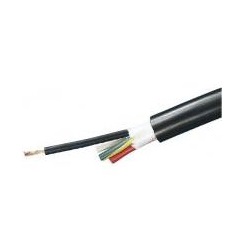N 88 is a term that has gained significance in various technological fields, particularly in the realms of telecommunications and electronics. As we delve deeper into the concept of N 88, it becomes essential to understand its applications, benefits, and its role in shaping the future of our interconnected world. This article aims to provide a comprehensive insight into N88, including its technical specifications, applications, advantages, and more.

Read more — N 88
The Origins and Development of N 88 Technology

Historical Context
The development of N 88 technology can be traced back to the evolution of communication systems. As the demand for faster and more efficient data transmission grew, engineers began to explore innovative solutions that would meet these requirements. N 88 emerged as a solution, evolving from earlier technologies like N 76 and N 80, which laid the groundwork for what we now recognize as advanced communication protocols.
Key Innovations Leading to N 88
Several key innovations contributed to the inception of N 88 technology. Breakthroughs in digital signal processing and modulation techniques have played a crucial role in enhancing data transmission capabilities. These advancements have enabled greater bandwidth efficiency, resulting in faster and more reliable communications.
Moreover, the convergence of different communication standards has also influenced the design and functionality of N 88, allowing it to integrate seamlessly with existing infrastructures while paving the way for future advancements.
The Role of Industry Leaders
Industry leaders, including major telecommunications companies and research institutions, have been instrumental in the development of N 88. Their collaborative efforts in research and development have led to the establishment of standardized protocols that ensure interoperability across various platforms. By pooling resources and expertise, these entities have accelerated the evolution of N 88 technology, making it accessible to a broader audience.
Technical Specifications and Features of N 88

Core Components
N 88 technology is built upon several core components that work together to facilitate efficient data transmission. The protocol encompasses various layers, each designed to handle specific tasks. At its foundation are the physical layer components, which manage the actual transmission of data over different mediums.
Additionally, the data link layer ensures error detection and correction mechanisms, while the network layer is responsible for routing packets efficiently. Lastly, the transport layer guarantees end-to-end communication integrity, thereby enhancing overall reliability and performance.
Performance Metrics
To gauge the effectiveness of N 88 technology, several performance metrics are employed. These include latency, throughput, and packet loss rates. Latency measures the time taken for a data packet to travel from source to destination, while throughput evaluates the volume of data transmitted over a given period. Packet loss rates indicate the percentage of packets that fail to reach their intended destination, providing insights into the reliability of the connection.
By analyzing these metrics, engineers and researchers can identify areas for improvement and optimize the technology for better performance.
Compatibility with Existing Protocols
One of the defining features of N 88 is its compatibility with existing communication protocols. This interoperability allows for seamless integration into current networks, minimizing disruption during upgrades or migrations. It also facilitates the gradual adoption of N 88 by organizations looking to enhance their communication systems without completely overhauling their infrastructure.
Applications of N 88 in Various Industries

Telecommunications
In the telecommunications sector, N 88 technology has revolutionized how data is transmitted over long distances. By leveraging its high-speed capabilities, telecom providers can offer improved services to customers, ranging from faster internet connections to more reliable voice services. This shift has not only enhanced user experiences but has also opened up new revenue streams for service providers.
Internet of Things (IoT)
The rise of the Internet of Things (IoT) has created an unprecedented demand for efficient communication protocols. N 88 plays a pivotal role in facilitating communication between various IoT devices, ensuring that they can exchange data quickly and reliably. Its low-latency characteristics make it particularly suited for applications requiring real-time data exchange, such as smart home devices and industrial automation systems.
Healthcare
In the healthcare industry, N 88 technology is being utilized to improve patient monitoring systems and telemedicine applications. With the ability to transmit large amounts of data instantaneously, healthcare providers can monitor patients remotely, accessing vital statistics and medical records in real time. This capability enhances patient care and streamlines administrative processes, ultimately leading to better health outcomes.
Smart Cities
As cities grow increasingly complex, the need for integrated communication systems becomes more pressing. N 88 technology is at the forefront of developing smart city initiatives, enabling efficient communication between various urban infrastructure components. From traffic management systems to public safety applications, N 88’s capacity to support vast networks of interconnected devices is helping build safer and more efficient urban environments.
Advantages of Utilizing N 88 Technology
Enhanced Speed and Efficiency
One of the most significant advantages of N 88 technology is its ability to transmit data at high speeds. This enhanced speed translates into more efficient communication, reducing the time lag typically associated with data transfers. Consequently, businesses can operate more effectively, addressing customer needs promptly and staying ahead of competitors.
Cost-Effective Solutions
Implementing N 88 technology can lead to cost savings in various ways. Firstly, its compatibility with existing protocols means organizations do not need to invest heavily in new infrastructure. Second, the increased efficiency results in lower operational costs, as data can be handled more effectively without compromising quality. Overall, N 88 presents a financially viable option for many entities looking to modernize their communication systems.
Improved Reliability and Security
N 88 technology incorporates robust error detection and correction mechanisms, ensuring that data packets reach their destinations intact. This reliability is crucial for businesses relying on accurate information for decision-making processes. Additionally, security features embedded within the protocol help safeguard sensitive data during transmission, mitigating risks associated with cyber threats.
Scalability for Future Growth
As organizations evolve, their communication needs may change. N 88 technology is designed with scalability in mind, allowing businesses to expand their networks without encountering significant bottlenecks. This adaptability ensures that organizations can grow confidently, knowing their communication systems will support their changing demands.
Challenges Associated with N 88 Implementation
Infrastructure Requirements
While N 88 offers numerous benefits, implementing the technology often requires substantial investment in infrastructure upgrades. Organizations may need to assess their current systems and determine whether they can support N 88 or if complete overhauls are necessary. This process can be time-consuming and costly, potentially deterring some businesses from adopting the technology.
Training and Skill Gaps
Adapting to new technologies necessitates training for personnel who will operate and maintain the systems. There may be knowledge gaps regarding N 88 among existing staff, necessitating additional training programs. Organizations must allocate resources to develop their workforce’s skills, ensuring they can leverage N 88’s full potential.
Regulatory Considerations
In certain regions, regulatory frameworks surrounding telecommunications and data transmission can pose challenges for implementing N 88 technology. Organizations must navigate these regulations carefully, ensuring compliance while attempting to adopt new systems. This process can involve lengthy negotiations and consultations with government authorities, further complicating implementation efforts.
FAQs about N 88
What is N 88 technology?
N 88 technology is a communication protocol designed to facilitate high-speed data transmission across various electronic platforms. It is particularly relevant in telecommunications, IoT, healthcare, and smart city applications.
How does N 88 differ from previous protocols?
N 88 builds on the foundation laid by earlier protocols, offering enhanced speed, efficiency, and compatibility with existing systems. Its innovations allow for improved data handling and lower latency compared to previous versions.
What industries benefit most from N 88?
Multiple industries benefit from N 88, including telecommunications, healthcare, IoT, and smart cities. Each sector leverages its capabilities to improve operations, enhance service delivery, and foster innovation.
Is N 88 secure for data transmission?
Yes, N 88 incorporates robust security measures, including error detection and encryption protocols, ensuring that data remains secure during transmission. This feature is especially crucial for industries handling sensitive information.
What are the future prospects for N 88 technology?
The future of N 88 technology looks promising, with ongoing developments aimed at improving its capabilities and expanding its application across various sectors. As the demand for efficient communication continues to rise, N 88 is poised to play a critical role in shaping the future of connectivity.
Conclusion
N 88 technology represents a significant advancement in the field of communication protocols, offering numerous benefits across various industries. Its ability to facilitate high-speed data transmission while ensuring reliability and security makes it an attractive option for organizations seeking to modernize their systems. Despite the challenges associated with its implementation, the long-term advantages of adopting N 88 far outweigh the initial hurdles. As we continue to move towards an increasingly interconnected world, understanding and leveraging N 88 technology will be essential for businesses looking to thrive in this dynamic landscape.
Contact information
Website: https://n881.net/
Email: n881.net@gmail.com
Phone number: +84830198847
Address: Chien Luoc/Alley 108 Room 7, Ward 9, Binh Tan, Ho Chi Minh City, Vietnam





